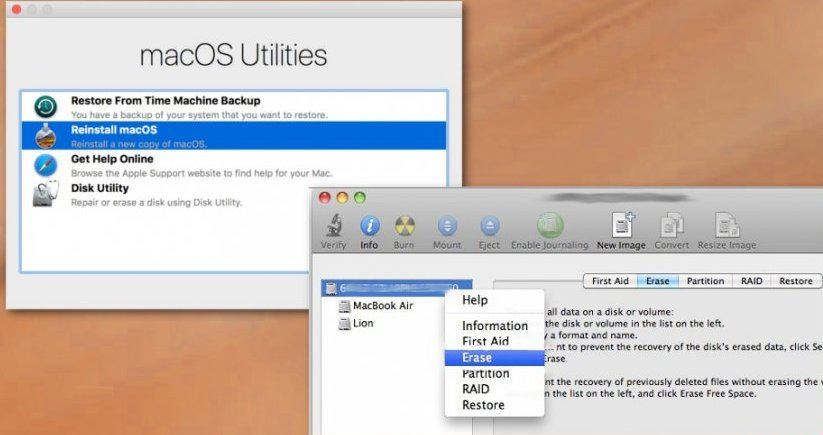
- #Mac disk doctor free mac os
- #Mac disk doctor free portable
- #Mac disk doctor free series
- #Mac disk doctor free windows
The iMac's colorful appeal, ease-of-use, and Internet capabilities were central to its marketing, leading the Associated Press to call it "futuristic" and "eye-catching". It was first available in Bondi Blue the second revision came in Blueberry, Grape, Tangerine, Lime, and Strawberry colors. Its translucent and colorful plastic case is considered an industrial design landmark of the late 1990s, and is credited to Apple design chief Jony Ive. The iMac G3 all-in-one computer was introduced in 1998. IMac G3 marketing heavily emphasized its design and Internet capabilities
#Mac disk doctor free mac os
Apple also stopped licensing Mac OS to Macintosh clone manufacturers, : 256 and changed the lineup's name from Macintosh to Mac. All were successful due to their high performance, competitive prices, and appealing designs, and helped return Apple to profitability. Jobs also simplified the complex Mac product line down to only four products, in order to "put the A-team" on each one: the consumer-oriented iBook (released in 1999) and iMac, and the high-performance PowerBook and Power Mac.

#Mac disk doctor free series
In a series of cost-cutting measures, Jobs fired a third of Apple's workforce, improved Apple's inventory management, and controversially shut down the Advanced Technology Group, which had created QuickTime, QuickDraw 3D, and OpenDoc. Though Jobs was initially brought back into Apple under an advisory role, he was later appointed Apple interim CEO on September 16, 1997.

Apple decided to acquire another company to form the foundation of their next OS, and settled on acquiring NeXT in 1997, which was founded by Steve Jobs following his departure from Apple in 1985, and had developed the Unix-based NeXTSTEP operating system. 1998–2005: Return of Jobs and revival įor years, Apple had "desperately" tried to develop a successor to the aging Mac OS, which lacked proper multitasking and memory protection, and was prone to crashes.
#Mac disk doctor free windows
Even after the transition to the superior PowerPC-based lineup in the mid-1990s, the falling prices of Wintel PCs, poor inventory management with the Macintosh Performa, and the release of Windows 95, contributed to a sustained decline in Macintosh sales. Apple had to compete against Macintosh clones, hardware manufactured by companies to whom Apple had licensed System 7, which cannibalized the sales of Apple's higher-margin Macintoshes. The Power Macintosh line, the first to use the new chips, proved to be highly successful, with over a million PowerPC units sold in nine months. That same year, Apple abandoned Motorola CPUs in favor of the RISC PowerPC architecture developed by the AIM alliance of Apple, IBM, and Motorola. In 1994, Apple's marketshare fell to 8.5% compared to market leader Compaq's 10.3%. On the hardware side, Apple discontinued the use of Frog design's Snow White design language, and brought product design in-house under the Apple Industrial Design Group. System 7 introduced virtual memory and cooperative multitasking in 1991. The second generation of PowerBooks were the first laptops in the world to have a trackpad, built-in Ethernet, and stereo speakers.
#Mac disk doctor free portable
Apple continued to release new models, including the PowerBook notebook lineup, which were the first portable computers with the keyboard behind a palm rest and a built-in pointing device (a trackball) in front of the keyboard. Over the 1980s, the Macintosh became dominant among creative professionals and in schools. In 1983, Apple licensed the rights to the Macintosh name from audio equipment manufacturer McIntosh Laboratory, and in 1986, bought the trademark outright.

The Macintosh name was conceived in 1979, when Apple employee Jef Raskin envisioned an easy-to-use, low-cost computer for the average consumer, and wanted to name the computer after his favorite type of apple, the McIntosh ( / ˈ m æ k ɪ n ˌ t ɒ ʃ/ MAK-in-tosh). It had an all-in-one design, and was described as a "revolution" by the New York Times. The Macintosh was pivotal in starting the desktop publishing revolution, thanks to PageMaker and Apple's LaserWriter printer. Steve Jobs partially took the inspiration for the GUI from Xerox PARC, an R&D institute that had partnered with Apple. The first Macintosh, unveiled in 1984, was the first successful personal computer with a user-friendly graphical user interface (GUI). Steve Jobs with the original Macintosh, January 1984


 0 kommentar(er)
0 kommentar(er)
